- What Is Stretching?
- Benefits Of Stretching
- How Does Stretching Relieve Stress?
- 7 Best Stress Relieving Stretches
- 1) The Child's Pose
- 2) The Seated Spinal Twist
- 3) The Happy Baby Pose
- 4) The Lying Glute Stretch
- 5) The Wide-Legged Forward Fold With A Chest Expansion
- 6) The Chest Opener Stretch
- 7) The Rotational Neck Stretch
- Conclusion
- Source
Stress is something that affects all people. It is a daily factor caused by work, finances, relationship problems, illness, and more.
Occasional stress is actually considered a good thing. It puts the body into a temporary “fight or flight” response, which can enhance focus and performance.
Chronic and long-term stress, however, can be bad for a person’s health.
The World Health Organization reports that workplace stress has become a common concern in the modern-day. Studies show that the prevalence of chronic stress is increasing. In five years, about 44% of people experience a significant increase in stress.
Several methods can be used to relieve stress. Many of these strategies go unnoticed by the average person who experiences stress.
Stretching is a good example. It is an activity proven to help reduce levels of stress through physiological effects.
We take a closer look at what stretching exercise is and teach you some stress relieving stretches.
What Is Stretching?
The term “stretching” is universal – as it can refer to a variety of activities that we perform. Many people stretch before they participate in sports. This helps to loosen muscles and reduces the risk of injuries on the field.
It essentially gets the body ready. After the event, stretching helps to reduce muscle tension and soreness and prevent stiffness in muscle tissue.
Stretching is also an activity that forms a large part of yoga. During a yoga pose, the body is stretched in specific ways – this often helps to relieve tension at areas like the shoulder blades and sometimes even results in reduced chronic pain symptoms.
Benefits Of Stretching
Stretching has a large number of benefits for the human body. There are different types of stretching activities – but the general idea remains the same. We take a quick look at what the most important benefits of stretching are below:
- Regular stretching helps to enhance the flexibility of the human body. There are both immediate and long-term benefits to stretching – particularly in terms of muscle flexibility.
- Stretching has been shown to help improve posture.
- Stretching helps to reduce tension in the body and mind, resulting in a calming effect.
- The risk of injuries may be reduced with a regular session of stretching. Muscles get warm during stretching, which helps to enhance the mobility of muscle tissue.
- Many people find that stretching helps to offer them increased levels of energy too. This is particularly due to enhanced blood flow.
These are only some of the potential benefits that a person may experience with stretching. Adding stretching to a person’s daily routine would yield more benefits – as the long-term effects are far more beneficial compared to the immediate relief offered.
How Does Stretching Relieve Stress?
There are different ways in which stretching can help a person who experiences an accumulation of stress. First, consider the fact that stretching assists in enhancing blood circulation in the body. Scientific studies have shown a daily stretching routine providing long-lasting improvements in blood flow throughout the body.
When blood circulation improves, more oxygen and nutrient-rich blood can be delivered to muscle tissues and other body regions. This essentially helps to reduce tension in the muscles.
Furthermore, the stretching itself causes muscles to warm up and release a buildup of tension. When this happens, chemicals in the body release – these are often called “mood-elevating” chemicals.
Combining these effects makes stretching such an excellent option for people who experience too much stress.
7 Best Stress Relieving Stretches
There are many types of stress relieving stretches that you can use. Yoga is undoubtedly one of the most popular activities that involve stretching. Finding the stretches that work for you is important. This helps you create a daily routine that is more effective.
It also contributes to a more significant reduction in tension, stress, and muscle stiffness – which all help you cope better with stressful situations.
We share the seven top stress relieving stretches that reduce stress levels, stiffness, and other issues you may be facing.
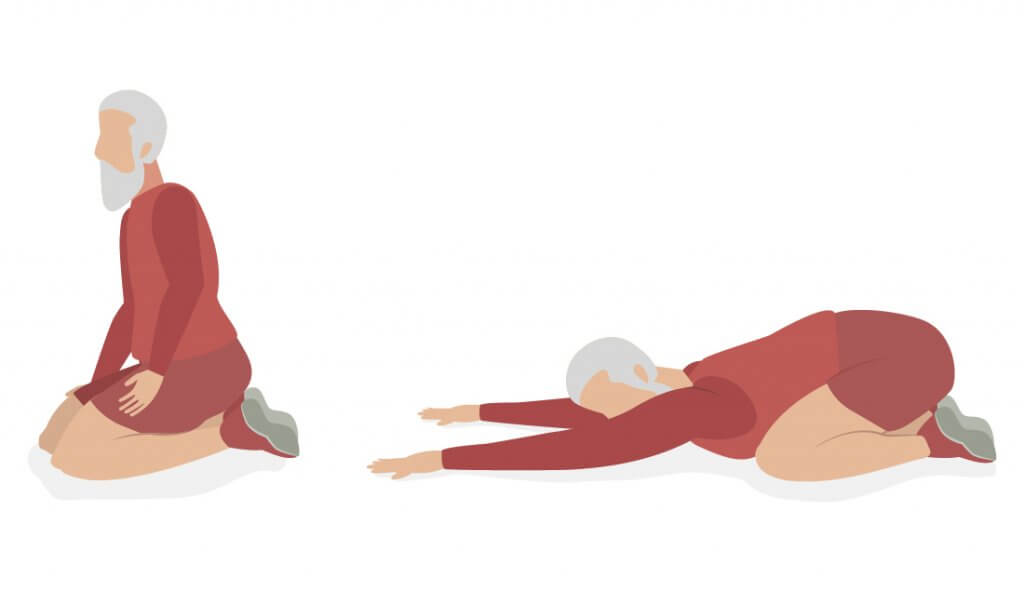
1) The Child’s Pose
The Child’s Pose is one of the most popular yoga positions – and for a good reason. This yoga pose works on the tension that accumulates in the lower back. A large number of individuals experience lower back pain daily. This is often due to the buildup of stress in the area.
The Child’s Pose is good for more than just relieving tension in the lower back. It helps with sleep and can reduce pain in the back.
The stretch is done by creating a V shape with the knees, with the buttocks at the heels. The hands are stretched out at the front, and the body is placed flat on the floor.
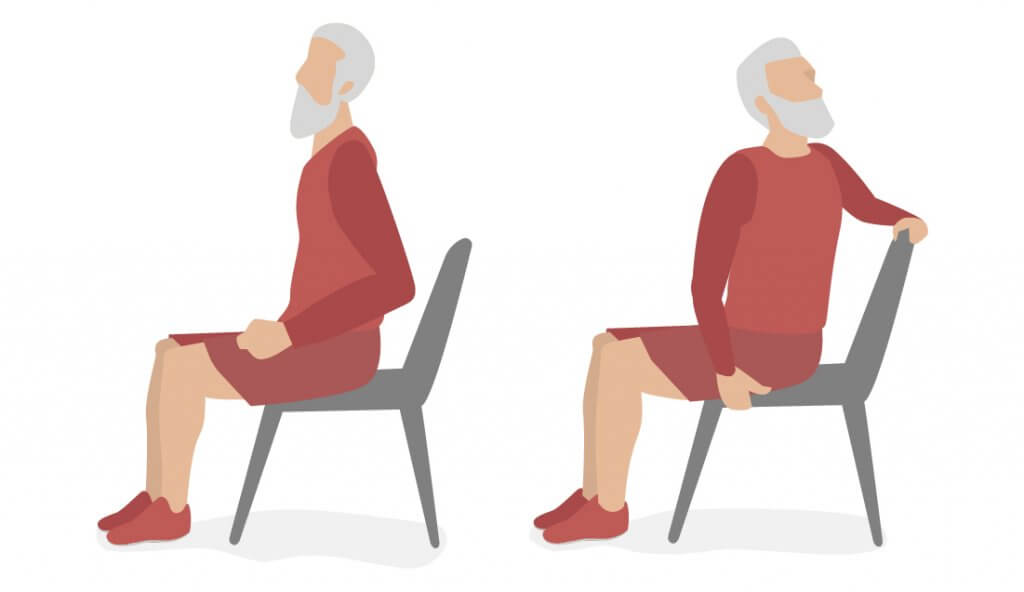
2) The Seated Spinal Twist
All you need for the Seated Spinal Twist is a chair and a few seconds. The seated position makes it easier to do at the office too. This twisting movement is known to provide a reduction in the tension of the spine.
Simply sit at the front edge of a chair – with feet placed on the floor in a fat position. The right hand is then placed on the chair’s backrest, with the left hand at the right leg’s outer thigh. The spine is lengthened, and deep breathing is executed. The activity should be repeated on the left side too.
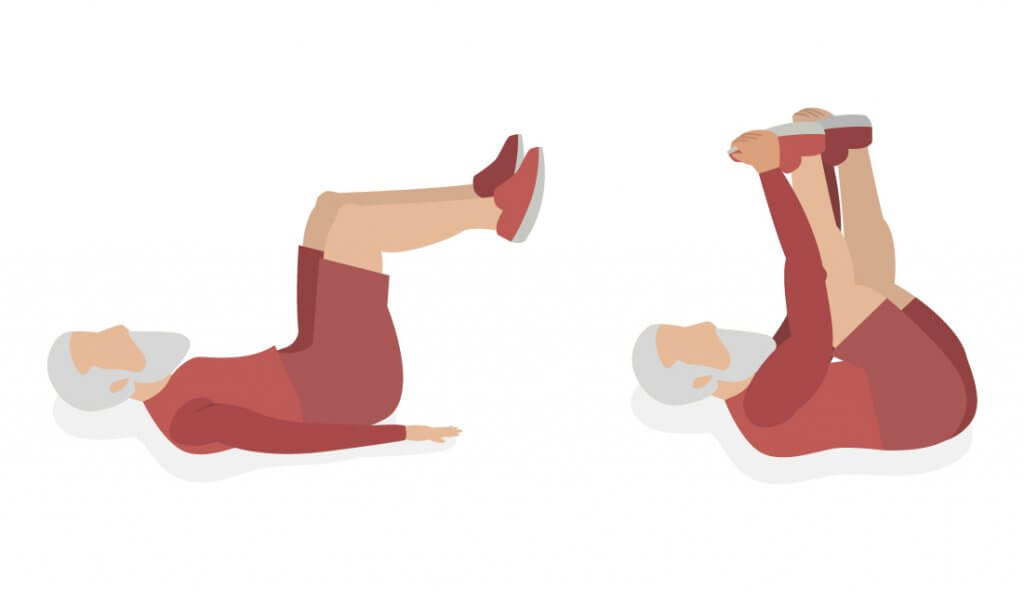
3) The Happy Baby Pose
Back pain can be caused by more than just the spine. A buildup of tension in the hips, for example, can contribute to lower back issues. This is where the Happy Baby Pose comes in – providing an effective strategy for “opening up” the hips. This pose is highly effective at relieving the physiological effects of stress, starting at the lower back.
The pose is performed while lying flat on the back. The knees are lifted inward toward the chest. The hands are placed at the feet. The knees are then pulled inward toward the chest.
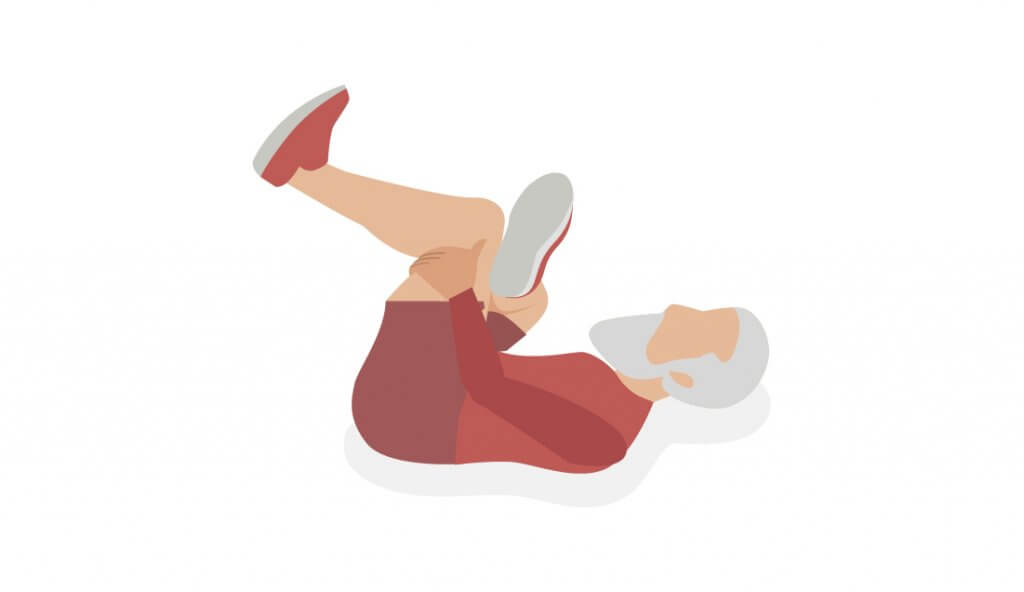
4) The Lying Glute Stretch
This move is great for people who sit down for long periods during the day. It helps to offer movement to the lower back region. The stretch is done on the floor. The Lying Glute Stretch is known for its ability to reduce tightness in the hamstrings. It also works up toward the lower back area.
Laying flat on the back is the first step, with knees in a bent position. The right foot is then crossed toward the left knee. This should create a figure that is similar to the number four. The legs are then pulled inward to the chest with both hands.
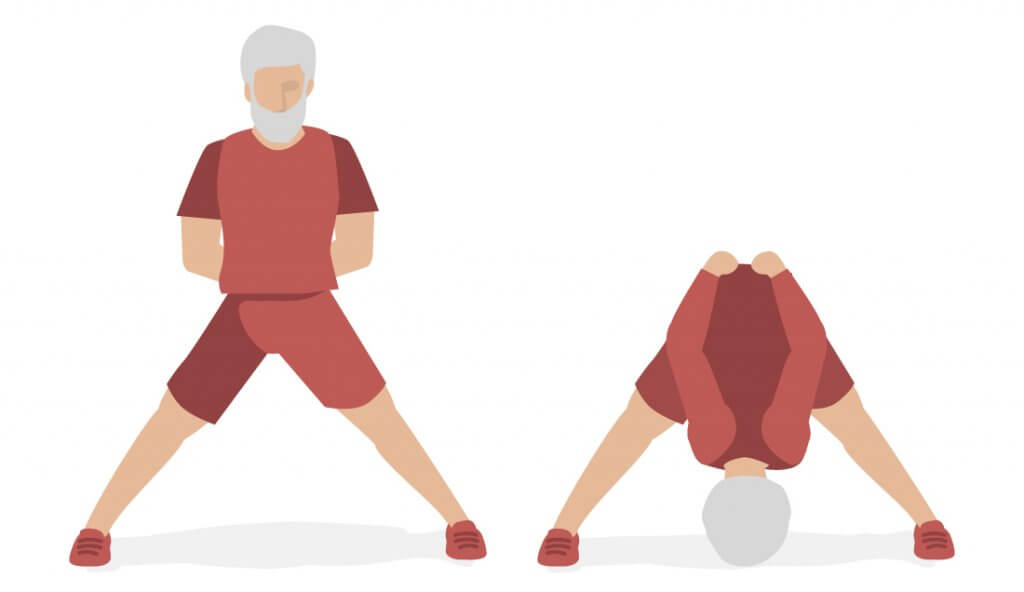
5) The Wide-Legged Forward Fold With A Chest Expansion
A stretch that offers a much better reach throughout the body, offering tension relief in both the upper and the lower body. The stretch is useful for reducing tension in the shoulders, relieving tightness in the chest, and for reducing stress in the hamstrings.
It is done in a stand-up position. The feet should be placed apart from each other, and the knees should be bent. Both palms go behind the body. During an inhale, the shoulders are rolled back. During an exhale, the body is folded forward while the arms are pushed in a forward direction.
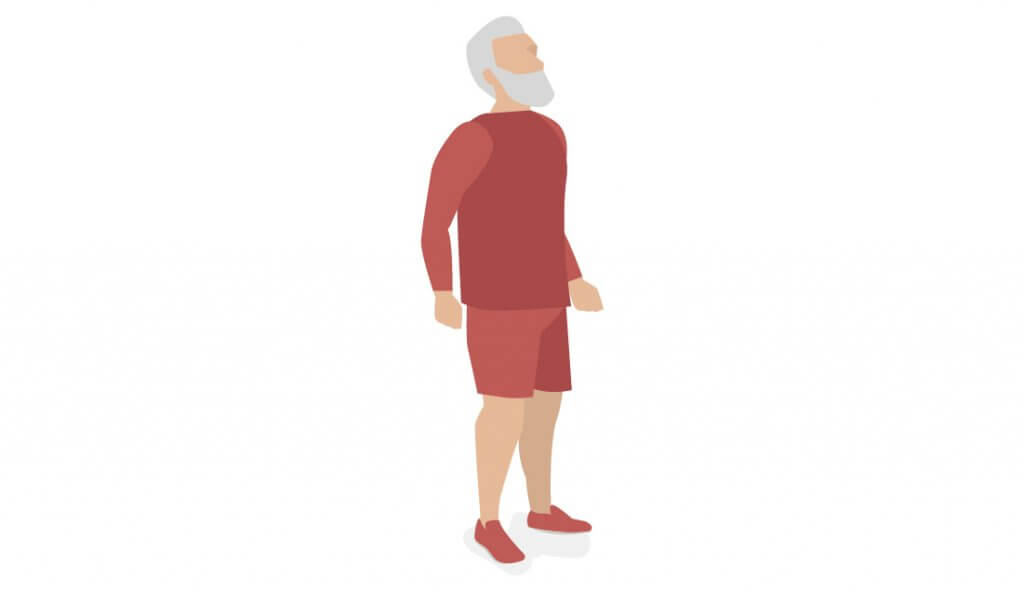
6) The Chest Opener Stretch
Chest tightness is common in people who have chronic stress. The Chest Opener Stretch is a great way to combat these effects. It also enhances blood circulation and oxygen supply to the area. This results in less tightness experienced in the chest region. A significant advantage of this stretch is the fact it can be done almost anywhere. It does not require as much space as some of the other stretches – many people perform the Chest Opener Stretch directly in front of their desk at work.
The hands are simply clasped at the back while pushing the shoulder blades inward. The chest is then pushed outward.
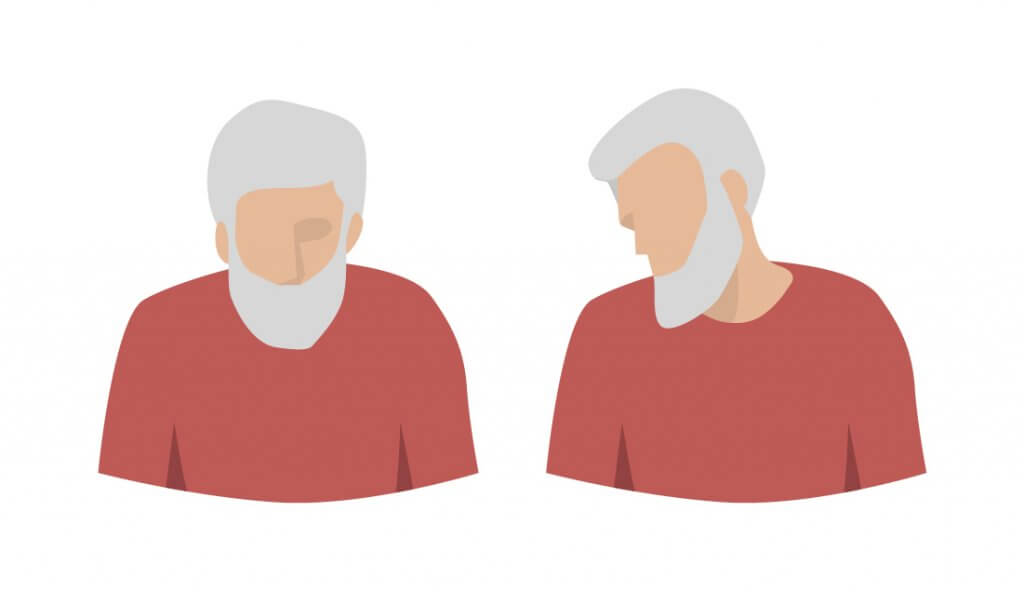
7) The Rotational Neck Stretch
When tension builds up in your neck, the Rotational Neck Stretch can do wonders. This is a great option when stress is causing you to experience tension headaches. A neck stretch provides relief of tension in this area. It eliminates tightness, resulting in neck pain, and can also help to alleviate tension in the upper back.
The chin is placed on the chest, then rotated gradually toward the one armpit. The head is moved back to the chest, then toward the other armpit. The position at the armpit should be held for a few seconds before releasing it.
Get Your FREE Eye Health Diet Plan
- Nine most important vitamins for eye health
- How to naturally protect and improve your eye health as you age
- Developed exclusively by our medical doctor
Conclusion
With the statistics of chronic stress increasing, we need to consider ways to counter this rise. Relaxation techniques, such as stretching have been shown to hold promising effects on stress.
A simple stretch during the day can reduce stress, improve poor posture, and enhance productivity, and focus at work. After a long day at the office, stretching may help a person wind down and relax. Multiple stress-relieving stretches can be used. These can even be combined with strategies like deep breathing for better results.







